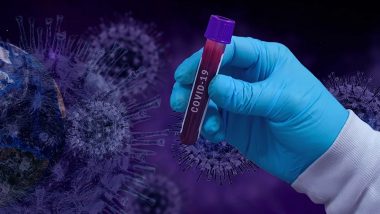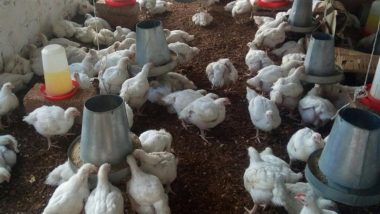London, May 29: The lack of adequate ventilation in homes and offices increases the risk of airborne spread of the novel coronavirus, according to a study which says preventing such transmission should be the next front of the battle against the COVID-19 pandemic.
According to the study, published in the City and Environment Interaction journal, the novel coronavirus, SARS-CoV-2, like many viruses, is less than 100 microns in size. However, it said expiratory droplets from people who have coughed or sneezed contain water, salts, and other organic material, along with the virus itself. WHO Said No Vegetarian Died Due to Coronavirus? Fact Check Behind Fake Viral Messages That Promote Sanatan Dharma by Saying Vegetarians Won't Die of COVID-19.
The researchers, including those from the University of Surrey in the UK, noted that as the water content from the droplets evaporate, the microscopic matter becomes small and light enough to stay suspended in the air.
Over time, they said, the concentration of the virus can build up, increasing the risk of infection -- particularly if the air is stagnant like in many indoor environments.
"Mechanical ventilation is common in many commercial and public buildings, but it may be ineffective, and may instead create situations that increase the residence time of contaminated air inside a built space," the researchers noted.
In the study, the scientists highlighted the need for improving building ventilation as a possible route to tackling indoor transmission of COVID-19. They said there is an immediate need for the identification of individuals at high risk of infection and appropriate implementation of targeted measures for places and activities.
Clear guidelines are required on short-term for situation-specific use of masks, the scientists added. "An improved indoor ventilation is an important step that can be taken to reduce the risk of infection," said Prashant Kumar, lead author of the study from the University of Surrey.
However, Kumar said, more studies must be conducted to recognise and understand airborne transmission of COVID-19 and similar viruses, to minimise the build-up of virus-laden air in places typically containing high densities of people.













 Quickly
Quickly




















